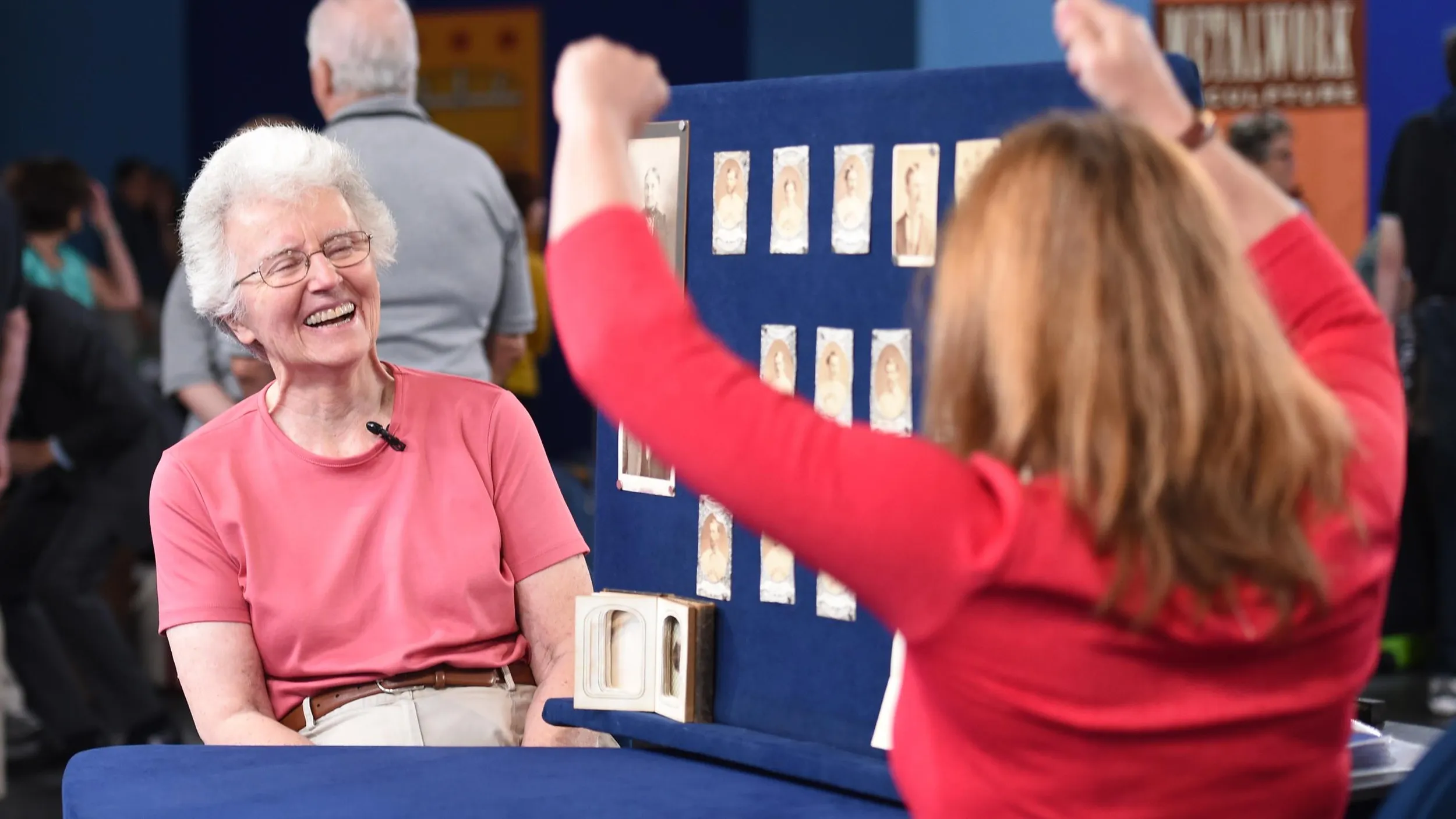GUEST: This is, I'm told, a Portland vase. And I think it's Wedgwood, but there's no mark on it, so I want to find out about that. That's about all I know. I want to find out how old it is.
APPRAISER: Tell me how you acquired it.
GUEST: I come from Cleveland, Ohio, and back in the '40s they used to have a huge white elephant sale, which raised money for the Cleveland Garden Center. And my mother was a volunteer there. It was mainly a sale, but the best things they got they put into an auction. And she was leaving one day after volunteering there and she heard the auctioneer just pleading with the audience, "Somebody please bid on this vase," and nobody was. So she thought, "Well, I'll help them out." And so she raised her hand and bid $12, thinking it would just get it started. And still, nobody bid, so she got it for $12.
APPRAISER: Wow, and when did you acquire it from her?
GUEST: When she died in '75, and I acquired it then.
APPRAISER: Well, even to think back to the '40s, $12 was a tidy sum of money back then.
GUEST: Well, yes, yeah.
APPRAISER: It is in fact a Portland vase. The Portland vase goes back to a Roman glass vase that was given to the Duchess of Portland. That's why the name. Thus the name Portland eventually was given to the British Museum in London, and Wedgwood got its concept from the original Roman glass. So basically, what we do have is a piece of black jasper, a solid piece of black jasper. And why I say solid, there's two versions of black jasper. There's what's called a black jasper dip, which would be taking a white body, dipping it in black, and then applying the white relief. Or in this case, a solid black, and then with the white applied relief. It actually saved a step in the process by doing it this way. Portland vases were made in a number of different sizes and a number of different colors. The black and white tends to be one of the most popular.
GUEST: Oh.
APPRAISER: And certainly this is the full size. This is a ten-and-a-half-inch size. On the bottom, there's always a gentleman...
GUEST: Yes.
APPRAISER: ...wearing what's called a Phrygian cap.
GUEST: Yes, I love that on the bottom.
APPRAISER: And that's what should be on the bottom of a full-size one. It was on the bottom of the Roman glass one, but they do think that that wasn't original to the vase, that that was put on to cover up a repair. Subsequently, Wedgwood still used it in his design, and so the full-size one should always have this.
GUEST: Yeah.
APPRAISER: It's beautifully modeled and a nice example. This particular one, dating to about 1880 to 1900.
GUEST: Hmm, okay.
APPRAISER: It does have one little chip right down there on the foot, which hurts the value a little bit, but not a lot.
GUEST: Oh, good.
APPRAISER: You said that it was not marked.
GUEST: No, I can't find any mark on it.
APPRAISER: I think it's not a case that it's not marked, it's just a case of you didn't know where to look.
GUEST: Oh, and where is it?
APPRAISER: And if we look down, right at the bottom of the tree trunk, right there is an impressed mark: Wedgwood.
GUEST: Oh, I never saw that.
APPRAISER: And that's traditionally where they would mark it, right along the foot rim. So though that might be the last place you would look, it's the first place that I looked for it.
GUEST: Yeah.
APPRAISER: Very, very, very popular today. In some of their designs they used a Portland vase as the symbol of Wedgwood.
GUEST: Oh.
APPRAISER: So the Portland vase is sort of one of those items that everybody that's a collector would like to have one full-size example in it. On a good day, at a good auction, it will realize somewhere between $2,000 and $3,000.
GUEST: Oh, my goodness. Oh, I had no idea.
APPRAISER: It's an excellent example.
GUEST: Oh, that's wonderful.
APPRAISER: I was so pleased that you brought it today. Thank you very much.
GUEST: Oh, thank you for telling me that.
APPRAISER: You're welcome.
GUEST: I'm just thrilled, I really am.



